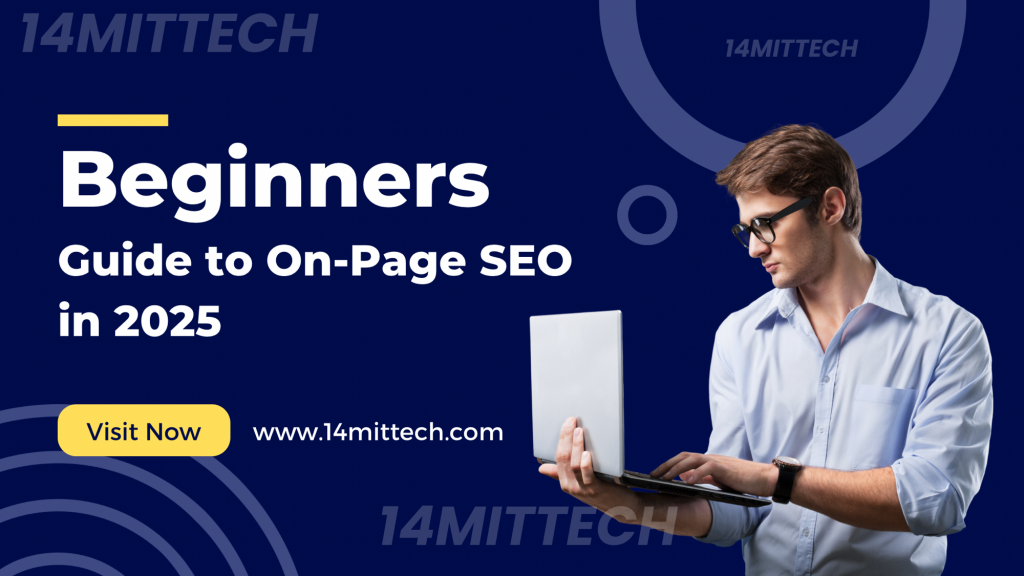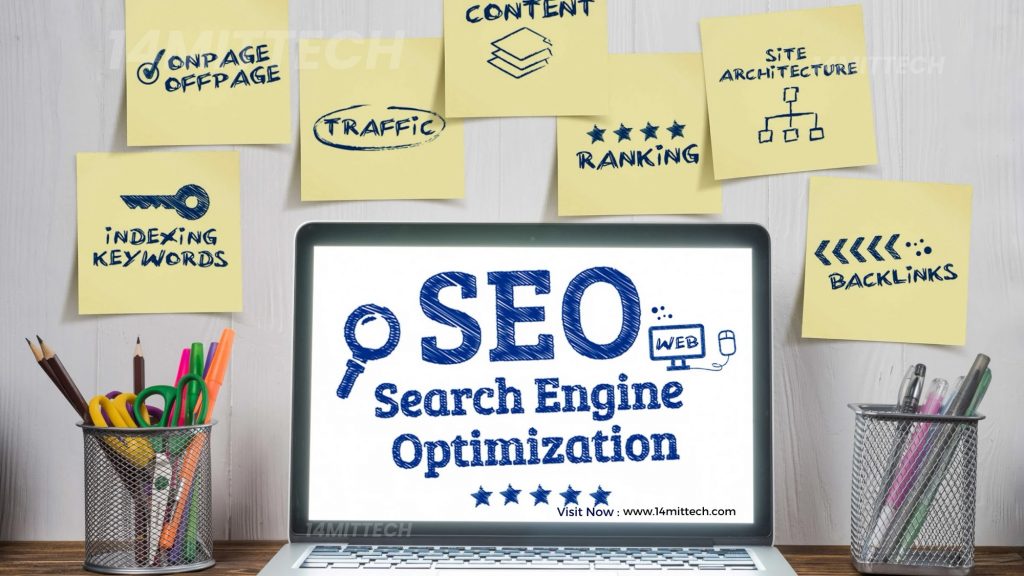
Did you know?
Over 90% of web pages get no organic traffic from Google – simply because they lack proper on-page SEO.
Whether you’re running a small business website, launching a blog, or managing a growing eCommerce store, on-page SEO is your first step to visibility online.
In this beginner-friendly guide, we’ll walk you through exactly what on-page SEO is, why it matters in 2025, and the simple but powerful steps you can take to start ranking higher in search engines – even if you’re not an expert.
Let’s break the myths and master the basics – so Google (and your customers) can finally find you!
What Is On-Page SEO? (And Why It Still Matters in 2025)
On-page SEO refers to all the optimization tactics you apply directly on your website pages to help search engines understand and rank your content better.
Think of it like giving Google a clear map and instructions to your digital storefront – so your ideal audience can reach you when they’re searching for what you offer.
In 2025, search engines are smarter than ever, but they still rely heavily on on-page signals like:
- Content quality and relevance
- Keywords and semantic relationships
- Site structure and internal linking
- Meta tags, URLs, and headers
- Page speed and mobile usability

Why it still matters:
Even with AI-driven search and voice assistants, on-page SEO remains the foundation for getting found online.
If your pages are not optimized, your beautifully designed website could be invisible – no matter how great your products or services are.
Section 1: Optimize Your Content for Relevance and Intent
In 2025, Google prioritizes helpful, people-first content. So the old tricks of stuffing keywords or spinning content no longer work.
How to create content that ranks and converts:
- Understand the Search Intent
Before writing, ask: What is the user really looking for? Are they looking to learn, buy, compare, or solve a problem? - Use the Right Keywords (Naturally!)
Use tools like Google Search Console, Ahrefs, or Ubersuggest to find keywords with high relevance and intent.
Example: Instead of just “SEO,” use long-tail keywords like “on-page SEO checklist for beginners.” - Place Keywords Smartly
Include your focus keyword in:- Page Title (H1)
- First 100 words
- Subheadings (H2, H3)
- Meta Description
- URL
- Image Alt Text
- Write for Humans First, Bots Second
Write like you’re talking to a customer – explain, guide, educate, and solve their problems.
Section 2: Craft SEO-Friendly Meta Tags and Headlines
Your meta title and meta description are like your digital billboard in search results.
In 2025, these still play a crucial role in CTR (click-through rates) and SEO visibility.
Meta Tag Best Practices:
- Meta Title
- Keep it under 60 characters
- Include the main keyword
- Add power words like “Guide”, “Checklist”, “2025”, “Step-by-Step”
- Example:
Beginner’s Guide to On-Page SEO in 2025 | Easy SEO Tips - Meta Description
- Keep it under 155 characters
- Summarize what’s in the post
- Include a call-to-action (CTA)
- Example:
Learn how to do on-page SEO in 2025 with this easy, step-by-step guide for beginners, marketers, and small businesses. - Headings Structure (H1, H2, H3)
Use heading tags to organize content. Don’t repeat H1s, and make sure subtopics follow a logical flow.
Section 3: Improve Technical On-Page Elements
Here’s what to focus on in 2025:
- URLs
Keep them short, readable, and keyword-rich.
Bad: www.example.com/page?id=23f3
Good: www.example.com/on-page-seo-guide - Internal Linking
Link to related pages on your site to:- Help users explore more
- Distribute SEO authority
- Reduce bounce rate
- Image Optimization
- Use descriptive filenames (e.g., on-page-seo-steps.jpg)
- Add alt text for accessibility and SEO
- Compress images to improve page speed
- Schema Markup
Add structured data to enhance how your pages appear in search. For blogs, use Article schema; for local businesses, use Local Business schema. - Mobile-Friendly Design
In 2025, more than 70% of searches happen on mobile. Use responsive design and test on multiple devices. - Page Speed
Use tools like Google PageSpeed Insights or GTmetrix to optimize loading times.
Common fixes:- Use next-gen formats like WebP
- Enable caching
- Minimize CSS and JavaScript
Section 4: Use SEO Tools to Work Smarter (Not Harder)
Even beginners can use tools that make on-page SEO easier.
Top Tools in 2025:
- Yoast SEO or Rank Math (for WordPress)
Helps optimize meta tags, readability, and keyword usage. - Google Search Console
Check indexation, click-through rates, and fix crawl errors. - Surfer SEO or Frase
Analyze what’s ranking and get content structure suggestions. - SEMRush / Ahrefs
Do keyword research, monitor competitors, and audit your website health. - Hotjar or Microsoft Clarity
Analyze how users interact with your page (UX affects SEO!).
Section 5: Helpful Tips and Tricks for Long-Term Success
- Update Old Content Regularly
Refresh your blogs with the latest stats, examples, and keywords to stay relevant. - Focus on E-E-A-T (Experience, Expertise, Authoritativeness, Trust)
Google’s ranking systems value real experience and trust. Add author bios, client testimonials, and case studies. - Use Call-to-Actions (CTAs)
Guide readers toward a goal — signing up, contacting you, or reading the next article. - Create Topic Clusters
Link multiple blog posts around a central theme (e.g., SEO), with one main “pillar” post. This helps build topical authority.
Conclusion: Ready to Make Your Website Google-Friendly?
On-page SEO is not about hacking Google — it’s about helping your audience find value quickly and easily.
If you’re just starting out, remember: small steps lead to big results. Begin with the basics we shared above, use the right tools, and keep refining your content over time.
Want help optimizing your site’s SEO pages or learning how to implement this yourself?
